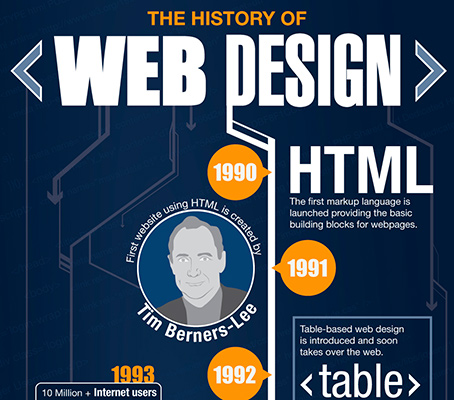Interested In Finding Out Exactly How Site Design Has Evolved Throughout The Years? Explore The Trip From Uncomplicated Layouts To User-Centered Techniques
Interested In Finding Out Exactly How Site Design Has Evolved Throughout The Years? Explore The Trip From Uncomplicated Layouts To User-Centered Techniques
Blog Article
Material Author-Johnsen Hejlesen
In the past, web sites were straightforward and focused on details. Navigating was direct, and layout was for desktop computers. Now, user experience is key. Recommended Online site overviews designs for simple navigation. Responsive designs match various tools. Today, dark setting minimizes strain, and minimal menus improve navigating. Interactive attributes involve customers, and bold visuals attract attention. click web page . See how design has actually evolved to improve your online journey.
Early Days of Web Design
In the very early days of website design, simpleness reigned supreme. Websites were standard, with restricted colors, typefaces, and layouts. The focus was on providing info rather than fancy visuals. Customers accessed the web with sluggish dial-up links, so rate and capability were essential.
Navigating menus were straightforward, generally located on top or side of the page. Internet sites were made for computer, as mobile surfing had not been yet common. Content was king, and developers prioritized very easy readability over complicated layout aspects.
HTML was the main coding language made use of, and designers had to work within its constraints. Computer animations and interactive features were marginal contrasted to today's standards. Sites were static, with little dynamic content or personalized individual experiences.
Increase of User-Focused Style
With the evolution of site design, a shift towards user-focused layout principles has come to be increasingly noticeable. Today, producing sites that prioritize customer experience is essential for involving visitors and attaining organization objectives. User-focused layout involves comprehending the needs, preferences, and behaviors of your target audience to customize the site's design, material, and features accordingly.
Developers now carry out extensive research study, such as individual surveys and functionality testing, to gather insights and responses directly from individuals. This data-driven method assists in developing intuitive navigating, clear calls-to-action, and visually attractive interfaces that reverberate with visitors. By placing the user at the center of the layout process, web sites can provide a more individualized and satisfying experience.
Receptive design has additionally become a crucial facet of user-focused design, guaranteeing that sites are enhanced for numerous gadgets and display dimensions. This flexibility improves accessibility and functionality, accommodating the diverse ways individuals connect with internet sites today. Basically, the rise of user-focused design indicates a shift towards creating digital experiences that prioritize the demands and assumptions of the end customer.
Modern Trends in Web Design
Discover the most up to date fads forming web design today. One noticeable pattern is dark mode layout, offering a streamlined and modern-day look while decreasing eye strain in low-light settings. An additional vital pattern is minimal navigating, simplifying menus and boosting user experience by concentrating on essential elements. Including micro-interactions, such as animated buttons or scrolling results, can develop a more interesting and interactive website. Receptive design stays crucial, guaranteeing seamless individual experiences throughout various devices. Additionally, using strong typography and unbalanced designs can include visual interest and accentuate details material.
Integrating AI technology, like chatbots for client assistance or tailored referrals, boosts customer interaction and enhances processes. Access has also end up being a significant pattern, with developers prioritizing comprehensive style techniques to accommodate diverse user demands. Embracing sustainability by enhancing web site efficiency for speed and performance is another arising trend in website design. Teaming up with user comments and information analytics to iterate and enhance design constantly is necessary for staying relevant in the ever-evolving digital landscape. By accepting these modern fads, you can produce an aesthetically enticing, easy to use web site that reverberates with your audience.
Conclusion
As you assess the advancement of internet site style from the early days to now, you can see how user-focused style has actually become the driving pressure behind modern fads.
Accept the journey of change and adaptation in website design, always maintaining the user experience at the forefront.
Tippingpointdigital
Remain current with the current patterns and technologies, and never quit evolving your method to create aesthetically spectacular and easy to use internet sites.
Advance, adjust, and create - the future of website design is in your hands.
